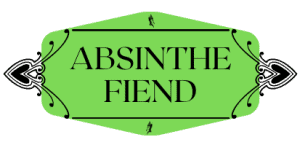Absinthe is a drink with a lot of history. Though one name, in particular, is behind a large portion of that history.
With the resurgence of absinthe’s popularity, it’s only fitting that Pernod’s very own absinthe would find its way onto store shelves around the world.
So today we’re taking a look at the supreme, O.G., grand-daddy of them all.
This is the Absinthe Fiend review of Pernod Absinthe Supérieure “Original Recipe.”
The Little Distillery That Could
We have to start with a quick history lesson to fully appreciate this offering from Pernod.
Over two centuries since Pernod opened the first absinthe distillery in 1797 (followed by a move to a larger distillery in 1805), who would have guessed that they would still be at it all these years later?
Today the company is known as Pernod Ricard and is one of the largest sellers of wine and spirits in the world.
But before they were the giant that they are today, the company was a humble absinthe distillery by the name of Pernod Fils.
As it just so happens, it was the absinthe made by Pernod Fils that was the most popular of all up until the absinthe bans in 1915.
That means it was almost certainly enjoyed by legends like Oscar Wilde, Vincent Van Gogh, and Alfred Jarry (to name only a few!)
The company evolved into Pernod Ricard and maintained its reputation for the absinthe-adjacent offerings of pastis and Pernod anise liqueur.
Related: Absinthe vs Pastis vs Pernod – What’s the Difference?
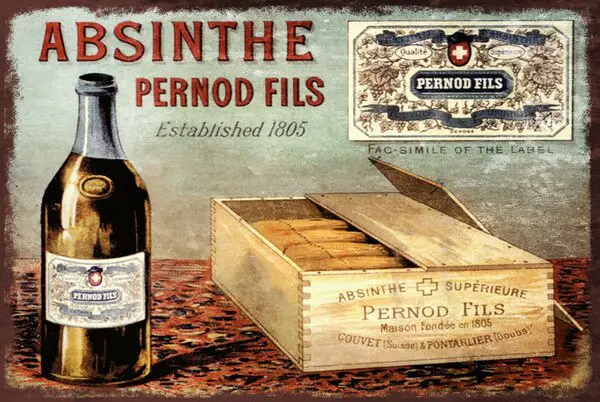
An Important Distinction
When the absinthe bans were (finally) lifted in the late 00’s, Pernod was quick to bring an absinthe to the market.
Unfortunately, it was artificially-colored garbage with perfectly mediocre flavors.
Realizing the mistake, Pernod instead began putting out bottles of their “Original Recipe” around 2013-2014.
This recipe ditches the artificial colorings and shortcuts and instead does everything “by the book.”
The Original Recipe is naturally colored with herbs, uses a wine base instead of a grain base distillate, and sources its wormwood straight from the Absinthe Holy Land in Pontarlier, France.
Related: Exploring How Absinthe is Made
In the vast majority of cases, if you see Pernod Absinthe on the shelf at your local store, it’s probably the “Original Recipe.”
Thankfully, that’s a good thing!
Just make sure you pay close attention to the label on the bottle and to the price you see on the shelf. If it’s around $30-40, it’s probably Pernod’s anise liqueur.
If it’s more like $60-75, it’s probably the real absinthe. (Just double-check the label to be sure!)
But with that all cleared up, let’s get into the review!
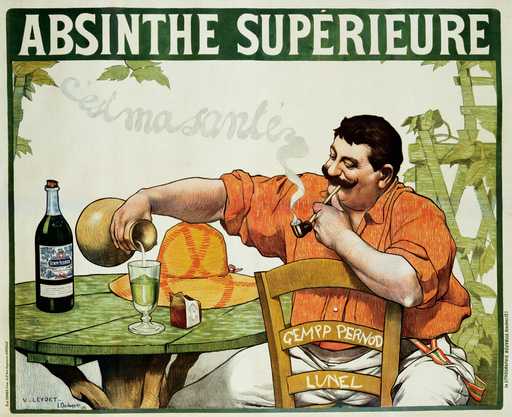
What Is Pernod Absinthe Supérieure?
The “Original Recipe” Pernod Absinthe isn’t trying to reinvent absinthe. Instead, the focus is on creating a simple, high-quality product in a classical manner.
(After all, the company had to do some extensive digging into the vaults to find the old records of how their absinthe was made back in the 1800s. It would be a waste to not follow that recipe!)
While it’s definitely an enjoyable treat on its own, this is also a huge part of what makes Pernod Absinthe an especially popular pick for absinthe cocktails. It’s enjoyable but also much easier to work with than many others!
Curiously, the instructions on the bottle say to drip 5 to 7 parts water to 1 part of absinthe when preparing it.
Personally, I think that’s a bit crazy and would overly dilute the flavor. Instead, I prepare mine with around 3.5 parts water to 1 part absinthe.
At 68% ABV, Pernod Absinthe is a 136-proof spirit. This puts it towards the higher end of the absinthe alcohol-by-volume spectrum though it’s not unreasonably strong.
Recommended: How to Properly Prepare Absinthe (Beginner Friendly Guide)
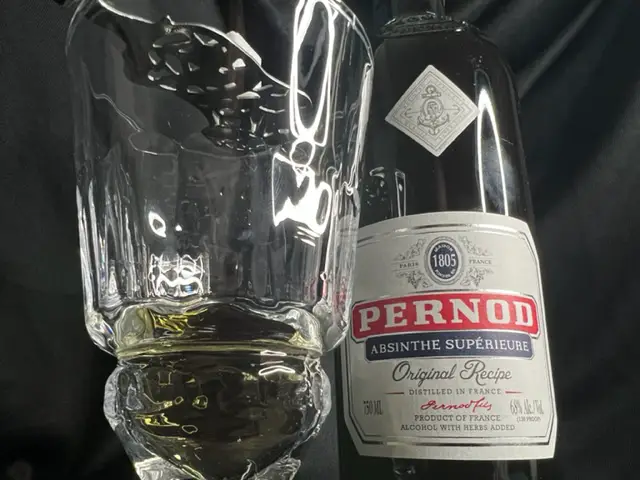
Aroma
The aroma of anise is present without being overpowering.
Instead, the grande wormwood and fennel are the stars of the show. Notes of sweet and cool mint and faint citrus make for a lovely and smooth undercurrent to the overall aroma.
Adding water, the louche brings out all of these elements in much the same balance. While the anise steps forward slightly, it still plays backup to the rich aroma of the wormwood.
What you get is a delicately balanced bouquet of aromas that are working together in harmony. While some elements may stick out more than others, there’s no sense of anything being overpowering.
Color & Louche
The “Original Recipe” Pernod Absinthe gets its brilliant, clean peridot color naturally instead of from artificial dyes. Most of this color is provided by the maceration of green nettles.
Adding water, the louche starts somewhat quickly. However, it is still full-bodied and contains all of the mesmerizing cloudy swirls that one could expect.
As the louche settles, the absinthe fully turns a soft, pale green.
Some faint trails of the absinthe’s oils make themselves known on the glass, but it is very subtle. Whether this is a plus or a minus for you depends on your own preference.
While I personally like a thicker layer of these oils in my absinthe, I’m not docking points for this.
After all, what ultimately matters most is that the oils are there and that they react well with the absinthe preparation ritual.
Keep in mind, this is with me preparing it at a ratio of 3.5:1. I can’t help but still chuckle at the (bizarre) recommendation of 7:1.
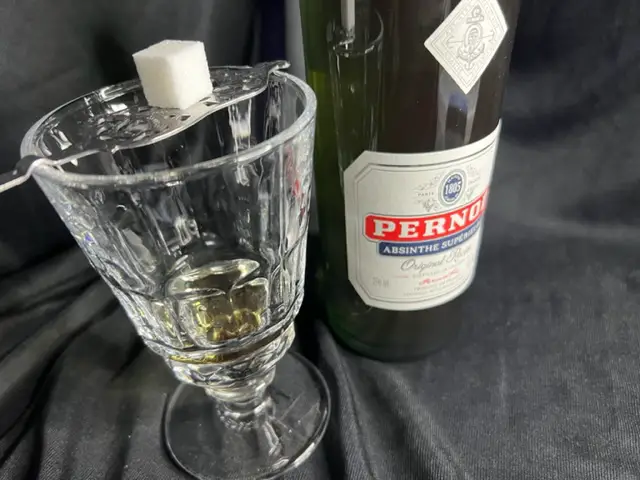
Flavor & Mouthfeel
Pernod Absinthe has a very smooth flavor and texture that seems to gently glide across the palate.
Just as with the aromas, the anise makes itself known but works mainly to further bring out the flavor of the wormwood.
This is a lighter absinthe than many, but it balances this delicate nature in such a way that the unique flavors aren’t compromised.
It’s different than many of my personal favorite absinthes in that way, but sometimes you want something lighter that still has flavor.
With such a high ABV, I was worried about the alcohol flavor. However, Pernod is enjoyably smooth so you don’t have to worry about the “alcohol burn” that many high-proof absinthes suffer from.
While citrus notes were only faintly detectable on the nose, the sweet lemon flavor carries through on the undercurrent of each sip.
Along with the anise and wormwood, it lingers well but doesn’t overstay its welcome. This results in a mouthfeel that is rich with texture but still feels fresh.
As for the finish, I do wish that it lasted slightly longer. As the last notes of anise and wormwood fade, expect a light bit of dryness.
Related: How To Taste Absinthe Like a Pro
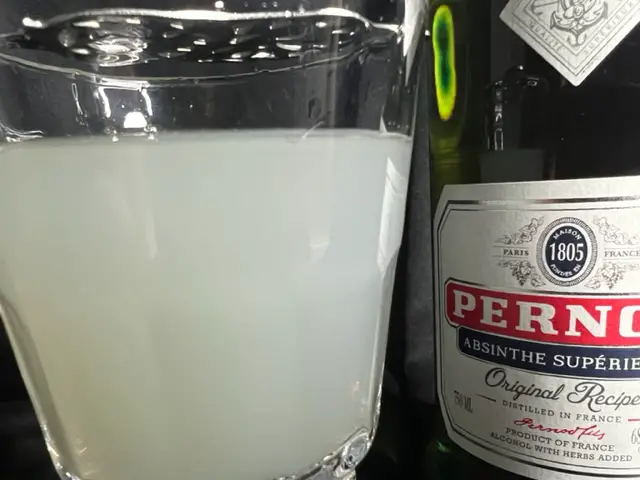
Conclusion – Reviewing Pernod Absinthe
I have no problem whatsoever recommending Pernod’s “Original Recipe” Absinthe to friends.
Because it takes such a classical approach to its distillation process, there’s a charming simplicity here compared to other, newer absinthe brands.
Whether someone is new to the world of absinthe or a veteran absintheur who just wants an option that is simple and enjoyable, Pernod Absinthe is a fantastic option.
Also, as I’ve previously mentioned, it’s fantastic for cocktails as well!
Because the flavor profile is so straightforward and highlights the anise and wormwood, you’re getting exactly the flavor that you want to be adding to your absinthe cocktail with this.
Its simplicity and versatility are why I personally make sure that I always have a bottle of this on my shelf at home.
Give it a try for yourself and I’m sure you’ll soon do the same!
